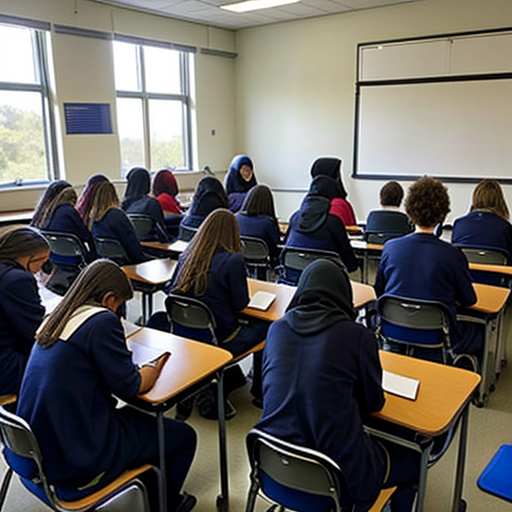In the wake of a tragic incident at an Oklahoma high school, where a student passed away just one day after being involved in a fight in the school bathroom, questions are being raised about the effectiveness and consequences of zero-tolerance policies. While schools implement these stringent measures with the intention of maintaining order and safety within their walls, it seems that they may be doing more harm than good.
Zero-tolerance policies were initially introduced to address drug use, weapon possession, and violent behavior in schools. However, over time, the scope of these policies has expanded to include even minor infractions such as dress code violations and disruptive behavior. The result is a system that punishes students harshly for relatively trivial offenses, often without taking into account the underlying reasons for their actions.
The consequences of zero-tolerance policies can be far-reaching and severe. Students who are suspended or expelled from school may fall behind academically, struggle to re-integrate into the educational system, and even become involved in criminal activity or experience mental health issues. Furthermore, these policies disproportionately affect students of color and those from low-income backgrounds, perpetuating existing disparities in education outcomes.
It is essential to recognize that zero-tolerance policies are not a one-size-fits-all solution to the complex issues facing our schools today. Instead, they often lead to situations where minor infractions are punished with extreme prejudice, resulting in the exclusion and marginalization of students who need support and intervention the most.
Schools must adopt a more nuanced approach to discipline that takes into account the individual circumstances of each student and provides them with appropriate resources and support to address their behavioral issues. This may include restorative justice practices, counseling services, or alternative educational programs designed to help students develop healthy coping mechanisms and resolve conflicts in constructive ways.
The tragic death of a student following a fight in a high school bathroom serves as a stark reminder of the potentially devastating consequences of zero-tolerance policies. It is time for schools to reconsider their approach to discipline, focusing on building positive relationships with students and providing them with the tools they need to succeed both academically and personally.
Ultimately, it is up to educators, administrators, and policymakers to recognize the limitations of zero-tolerance policies and work together to develop more effective, compassionate strategies for addressing student misconduct. By prioritizing student well-being and fostering an environment that values understanding and empathy, we can create a safer, more supportive learning experience for all.






Leave a Reply